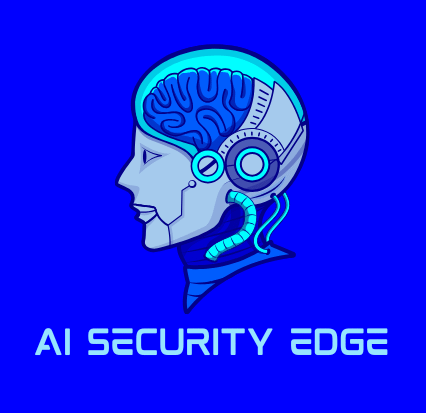In today’s fast-paced digital landscape, the intelligent agent lifecycle plays a critical role in the design, deployment, and management of autonomous systems that can perceive, reason, and act independently. Whether it’s a virtual assistant, robotic process automation, or AI-driven customer support, understanding this lifecycle is key to optimizing performance and driving business value. This article dives into the essential stages of the intelligent agent lifecycle, explores its benefits, and provides actionable insights to leverage intelligent agents effectively.
What Is the Intelligent Agent Lifecycle?
The intelligent agent lifecycle refers to the sequential phases an intelligent agent undergoes during its existence—from conception to retirement. An intelligent agent is any software or system component that can autonomously perform tasks, make decisions, and interact seamlessly with its environment or users. The lifecycle framework ensures that these agents are systematically developed, refined, and maintained to fulfill their intended purposes efficiently.
By managing each lifecycle phase carefully, organizations can ensure robustness, adaptability, and sustained performance of intelligent agents, enhancing overall operational efficiency.
Key Stages of the Intelligent Agent Lifecycle
Understanding the lifecycle stages can help developers, business managers, and stakeholders design more effective intelligent agents. The following are the core stages:
1. Requirement Analysis and Planning
Every successful intelligent agent begins with clear objectives and requirements. During this stage, analysts and domain experts define what the agent should achieve, its operational environment, and the data it will process. Planning involves prioritizing features and determining performance metrics.
2. Design
Designing an intelligent agent includes selecting the architecture, algorithms, and interaction mechanisms. This stage addresses whether the agent will be rule-based, use machine learning models, or a hybrid approach. Designers also outline how the agent perceives input, processes information, and acts.
3. Development and Training
In this phase, developers build the agent according to the design specifications. For AI-based agents, this involves training machine learning models using relevant datasets. Data quality at this stage significantly impacts the agent’s effectiveness and reliability in real-world scenarios.

4. Testing and Validation
Testing is critical to ensure the intelligent agent performs as intended. This involves functional testing, performance evaluation, and validation against defined requirements. User feedback might be incorporated to fine-tune behaviors and responses.
5. Deployment and Integration
Once validated, the agent is deployed into the production environment where it interacts with live systems or users. Integration with other IT infrastructure (databases, APIs, user interfaces) is finalized during this stage to enable seamless operations.
6. Monitoring and Maintenance
The lifecycle does not end at deployment. Continual monitoring ensures the agent adapts to evolving data, environments, or user behaviors. Maintenance includes updating models, fixing bugs, and optimizing performance to prevent degradation over time.
7. Retirement or Evolution
Eventually, an intelligent agent may become obsolete due to technological advances, changes in requirements, or new business needs. At this stage, the agent is either retired or evolved into a new version following the lifecycle again.
Benefits of Managing the Intelligent Agent Lifecycle
Implementing a structured lifecycle approach offers numerous advantages:
- Improved Reliability and Accuracy: Systematic development and testing reduce errors and enhance the agent’s decision-making quality.
- Scalability: Lifecycle management supports scaling agents across different domains or tasks without compromising performance.
- Cost Efficiency: Early problem detection and ongoing maintenance prevent expensive overhauls or failures.
- Enhanced User Experience: Continuous refinement based on real feedback ensures agents remain aligned with user needs.
- Reduced Risks: Identifying risks during early design phases and continuous oversight mitigate operational and security threats.
Best Practices for Optimizing the Intelligent Agent Lifecycle
To maximize the benefits, consider the following best practices:
- Engage Multidisciplinary Teams: Combine expertise from domain specialists, data scientists, software engineers, and users.
- Leverage Robust Data Governance: Ensure data quality, privacy, and ethical use throughout the lifecycle.
- Adopt Agile Methodologies: Use iterative development to rapidly adapt to feedback and changing requirements.
- Implement Continuous Monitoring Tools: Use automated tools to track agent performance and alert for anomalies.
- Plan for Lifecycle Transitions: Anticipate agent retirement or upgrade cycles early to avoid disruptions.
Frequently Asked Questions About the Intelligent Agent Lifecycle
Q1: What phases are involved in the intelligent agent lifecycle?
The lifecycle typically includes requirement analysis, design, development and training, testing and validation, deployment, monitoring and maintenance, and finally retirement or evolution. Each phase ensures that the agent functions effectively and adapts over time.
Q2: Why is monitoring important after deployment in the intelligent agent lifecycle?
Monitoring helps detect performance issues, data drift, or environmental changes that might affect the agent’s behavior. This ongoing oversight allows timely updates and maintenance, ensuring that the agent remains accurate and relevant.
Q3: How does the intelligent agent lifecycle improve business outcomes?
By following a structured lifecycle, organizations can deploy agents that are more reliable, scalable, cost-efficient, and aligned with user requirements. This translates to improved operational efficiency, better customer service, and reduced risks.
Expert Insight: The Role of Intelligent Agent Lifecycle in AI Success
According to researchers at the MIT Sloan School of Management, managing AI systems like intelligent agents through defined lifecycles contributes significantly to avoiding common pitfalls such as bias, model decay, and misalignment with business goals (source). Proper lifecycle management enables sustained innovation and competitive advantage.
Conclusion: Embrace the Intelligent Agent Lifecycle for Smarter Automation
Understanding and implementing the intelligent agent lifecycle is a strategic imperative for any organization looking to harness intelligent automation effectively. From initial planning through deployment and beyond, each phase adds value by enhancing reliability, adaptability, and user satisfaction. By investing in lifecycle management, businesses can unlock the full potential of intelligent agents—leading to smarter decisions, streamlined processes, and a stronger digital future.
Ready to optimize your intelligent agents for greater impact? Start by evaluating your current agent lifecycle practices today and identify areas where a more structured approach could transform your automation success. The future of intelligent automation begins with mastering the lifecycle.




